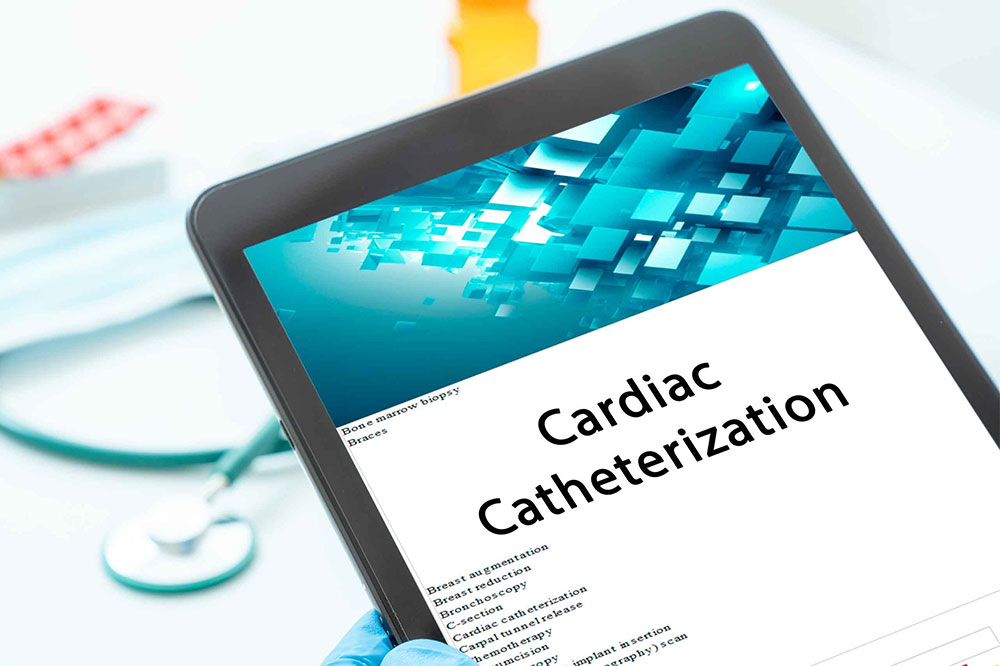In-Depth Guide to Cardiac Catheterization: Procedures, Benefits, and Clinical Significance
This comprehensive guide explains cardiac catheterization—its procedures, applications, and benefits. It details how cardiologists perform minimally invasive interventions to diagnose and treat heart conditions, such as blockages and valve issues. Learn about preparation steps, common uses like angioplasty and valve repair, and post-procedure care. Cardiac catheterization has transformed modern cardiology by offering precise diagnostics and effective treatments with less recovery time. Essential reading for patients and healthcare providers aiming to understand this critical heart procedure and its role in maintaining cardiovascular health.

Comprehensive Overview of Cardiac Catheterization and Its Critical Role in Heart Health
Cardiac catheterization is a vital medical procedure used both for diagnosing and treating various heart conditions. This minimally invasive technique allows cardiologists to identify issues such as arterial blockages, valve malfunctions, and abnormal electrical rhythms within the heart. By inserting a thin, flexible tube called a catheter into blood vessels—typically through the groin, arm, or neck—medical professionals can guide it to the heart to conduct detailed examinations or perform interventions. This procedure has revolutionized cardiology by providing a less invasive alternative to open-heart surgery, offering precise insights into cardiac health with reduced recovery times. Understanding the details of cardiac catheterization is essential for those facing heart-related issues or preparing for diagnostic or therapeutic procedures.
Cardiac catheterization typically involves inserting a slender, flexible tube into a blood vessel—most commonly accessed via the groin, arm, or neck—and guiding it toward the heart. Once in position, the catheter allows physicians to evaluate heart valve function, obtain tissue samples from the myocardium, or perform various interventional procedures. This approach often serves as an alternative to invasive surgical options, especially for valve repairs or replacements. By providing real-time imaging and functional assessments, cardiac catheterization has become indispensable in modern cardiology.
This complex procedure is primarily performed by a specialized cardiologist, often an interventional cardiologist trained in minimally invasive techniques. The process involves a team of healthcare professionals, including nurses, radiologic technicians, and perfusionists, working together in dedicated catheterization labs equipped with advanced imaging technologies. The collaborative effort ensures accurate diagnosis, safe procedure execution, and comprehensive patient care. Pre-procedural planning and post-procedural monitoring are critical aspects of the process, emphasizing the importance of a multidisciplinary team to achieve successful outcomes.
The process begins with the cardiologist sterilizing and numbing the insertion site, typically with local anesthesia. A needle creates access into the blood vessel, through which the catheter is carefully threaded toward the heart under fluoroscopic guidance—a real-time X-ray imaging technique. Contrast dye is then injected through the catheter, illuminating the blood flow and revealing any blockages or structural abnormalities. Different procedures—such as left or right heart catheterization—pivot on the specific area of the heart being examined. The imaging results help identify conditions like clogged coronary arteries, valve leaks, or congenital anomalies, allowing the medical team to determine the most effective treatment strategy.
During the procedure, additional interventions, such as balloon angioplasty or stent placement, can be performed if blockages are detected. This comprehensive approach minimizes the need for more invasive surgeries.
The versatility of cardiac catheterization makes it a cornerstone in modern cardiology. It serves both diagnostic and therapeutic purposes across a broad spectrum of cardiovascular diseases. Some of the most common applications include:
Angioplasty and Stenting: In cases of coronary artery disease, a balloon catheter is used to dilate narrowed arteries, followed by the placement of a stent—an expandable mesh tube that ensures arteries remain open, restoring effective blood flow to the myocardium.
Valve Repair and Replacement: Transcatheter aortic valve replacement (TAVR) is a breakthrough minimally invasive procedure that addresses faulty aortic valves without open-heart surgery, reducing recovery time and procedural risks.
Correction of Heart Defects: Both congenital and acquired structural heart issues can be repaired via catheter-based techniques, including various device placements or tissue repairs to resolve leaks or abnormal openings.
Biopsy and Tissue Sampling: When tissue abnormalities or cellular issues are suspected, biopsy procedures can be performed to collect samples directly from the heart muscle, aiding accurate diagnosis and targeted treatment plans.
Other Interventional Procedures: These include embolization for bleeding control, removal of calcified deposits, and other targeted therapies aimed at improving cardiac function and patient outcomes.
Preparation Guidelines for Cardiac CatheterizationPreparation is crucial for a successful and safe procedure. Patients should disclose their full medical history, including any allergies—particularly to iodine-based contrast agents, latex, or medications. Pre-procedure fasting of 6-8 hours is typically required to reduce the risk of aspiration and improve safety during anesthesia. Patients may also need to stop certain medications as directed by their healthcare team, especially blood thinners. Post-procedure, close monitoring is essential to detect any adverse reactions or complications, such as bleeding, infection, or symptoms like chest pain, dizziness, or shortness of breath. Emergency contact information should be readily available in case complications arise, ensuring quick intervention if needed. Adequate rest and hydration post-procedure facilitate recovery, and follow-up testing may be scheduled to evaluate the long-term effectiveness of any interventions performed during the catheterization.




